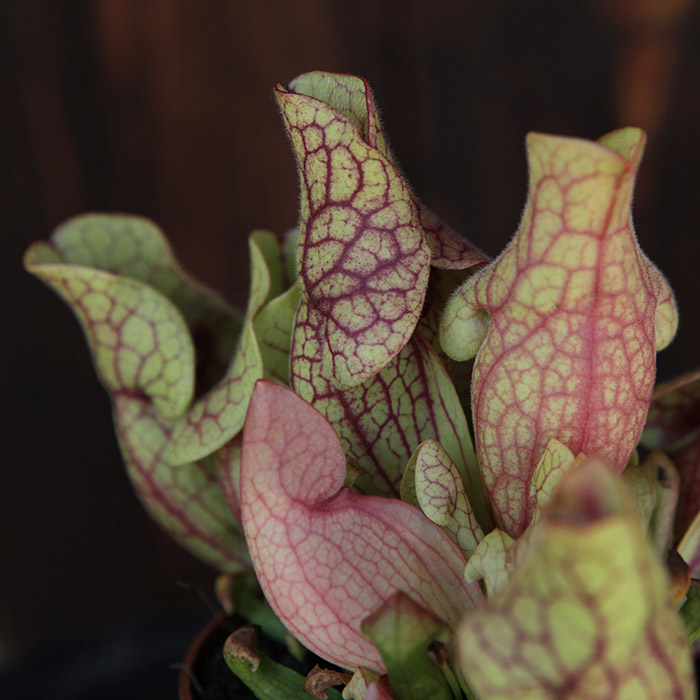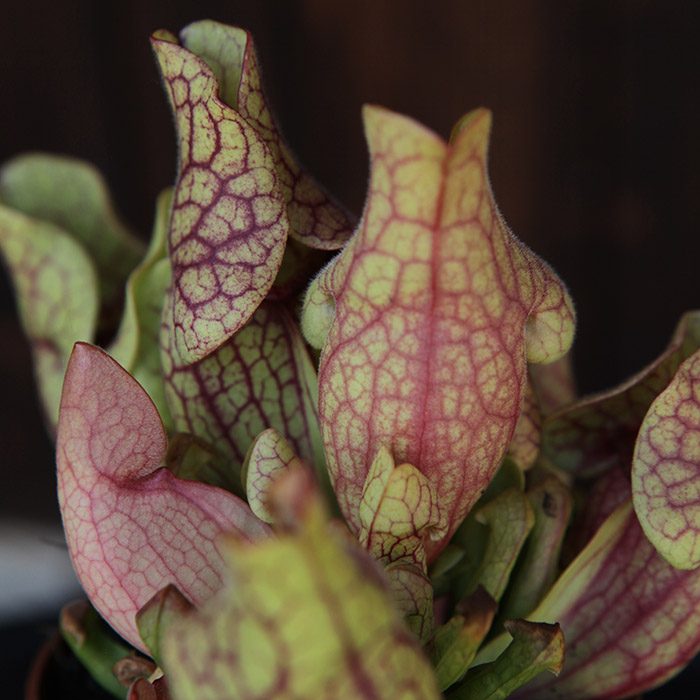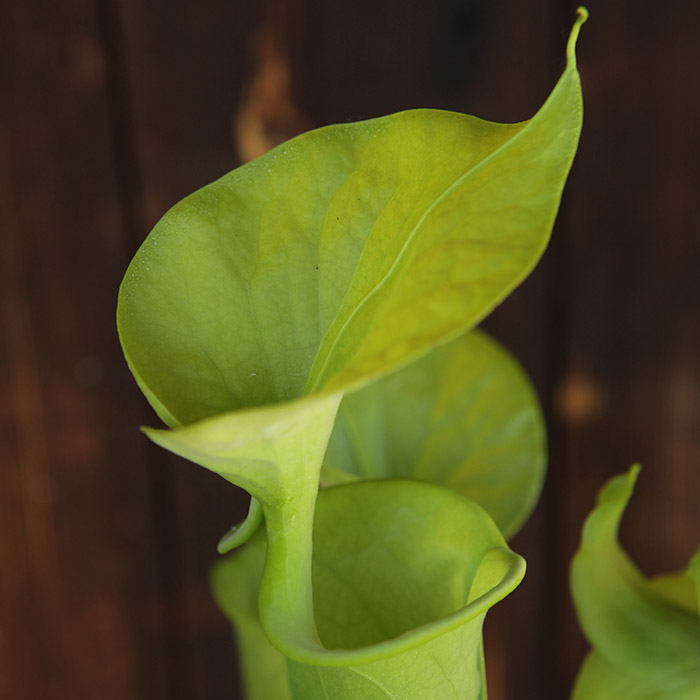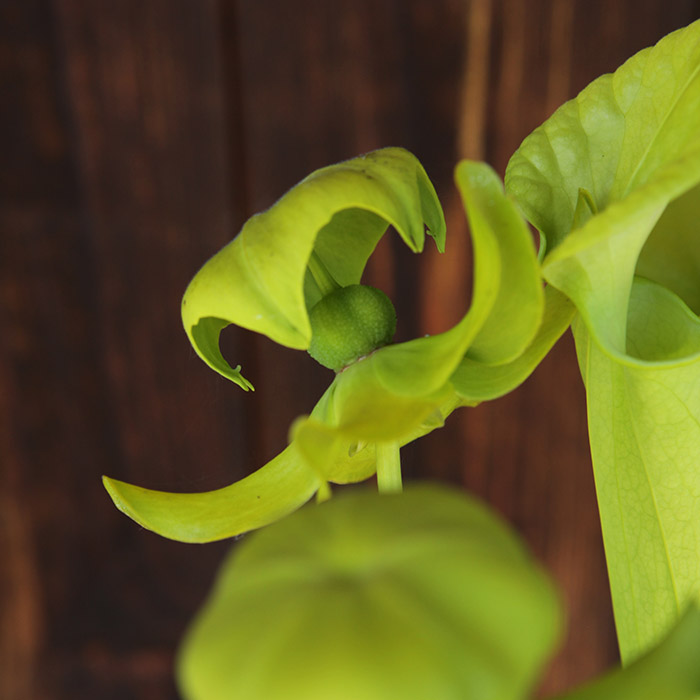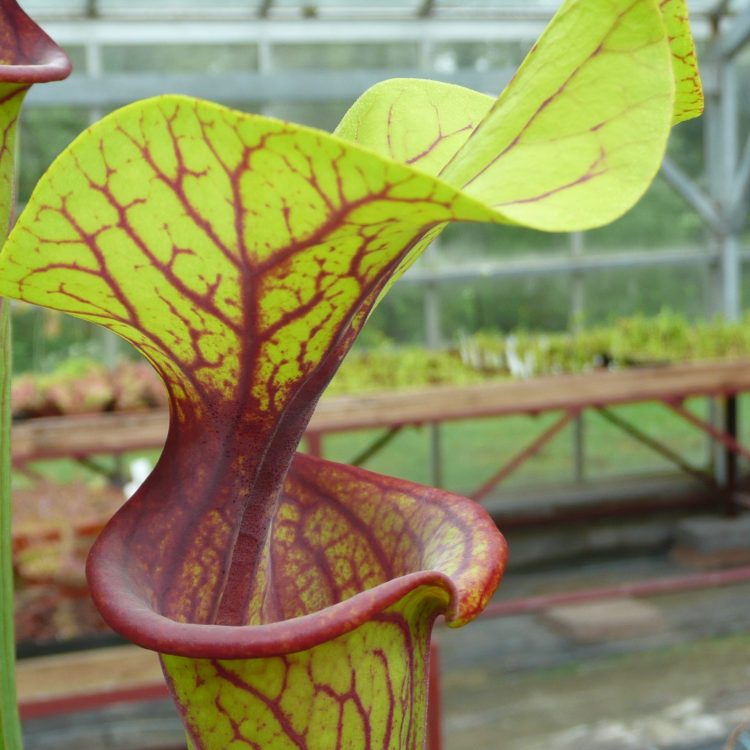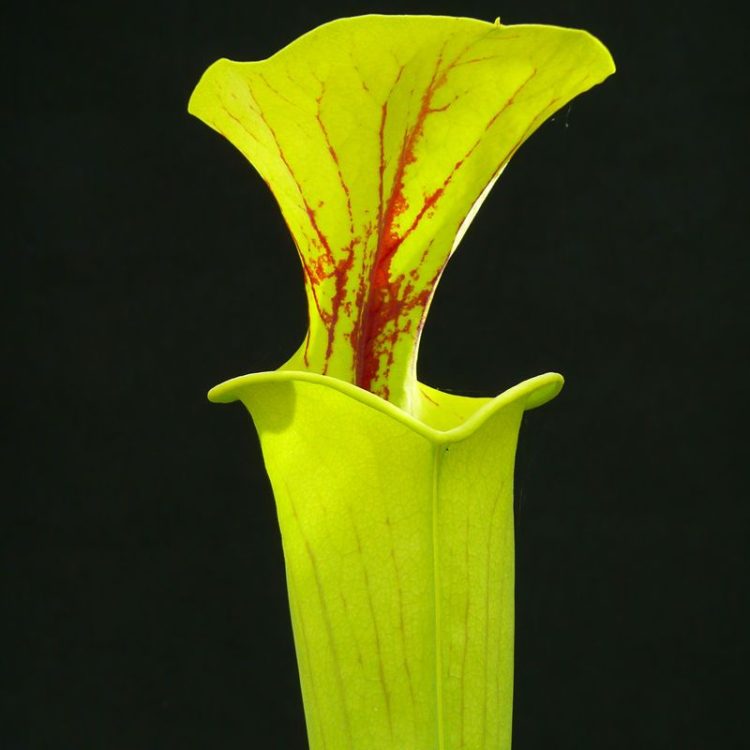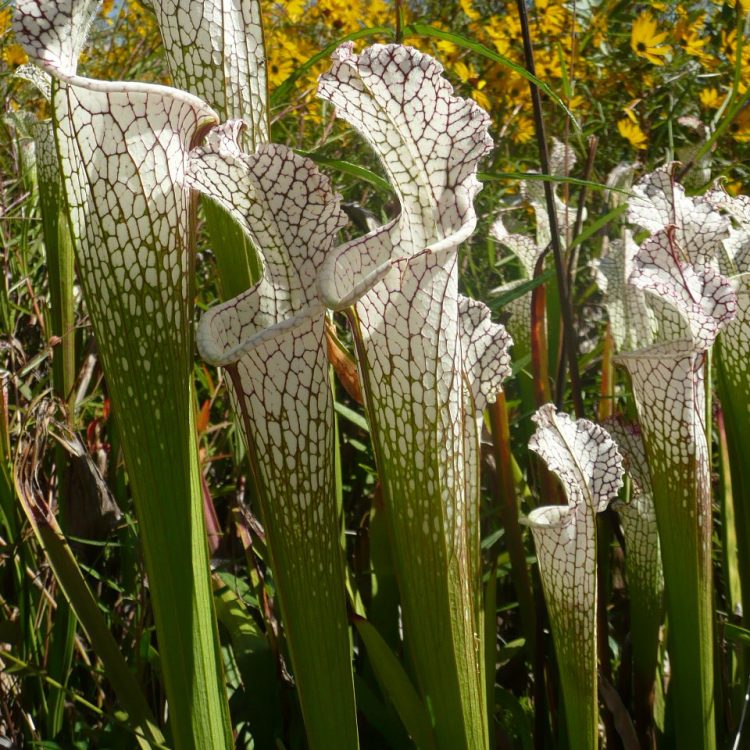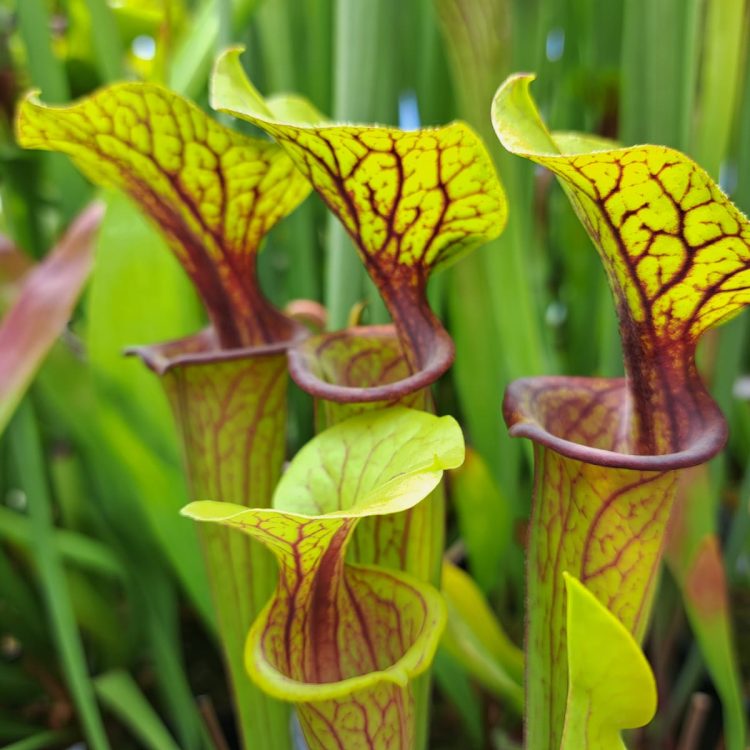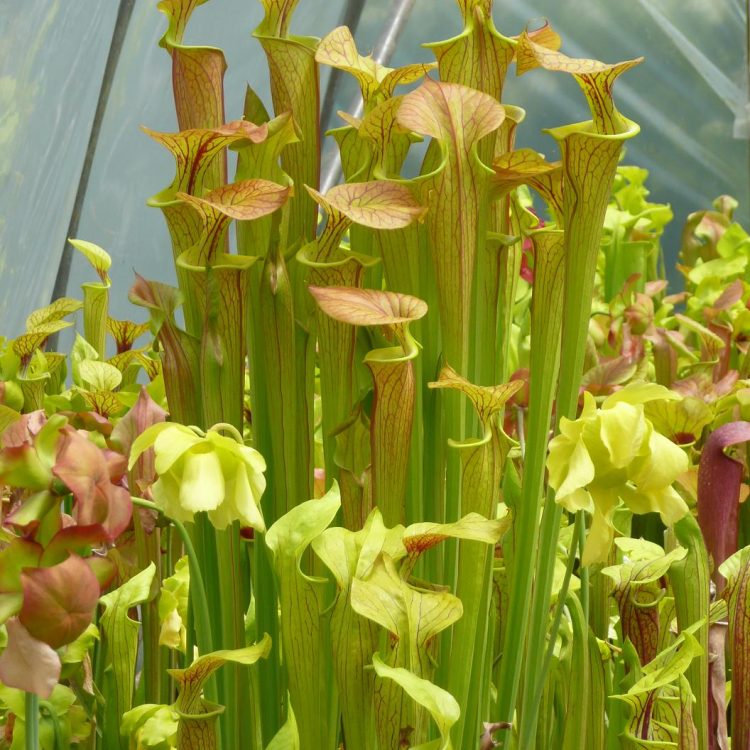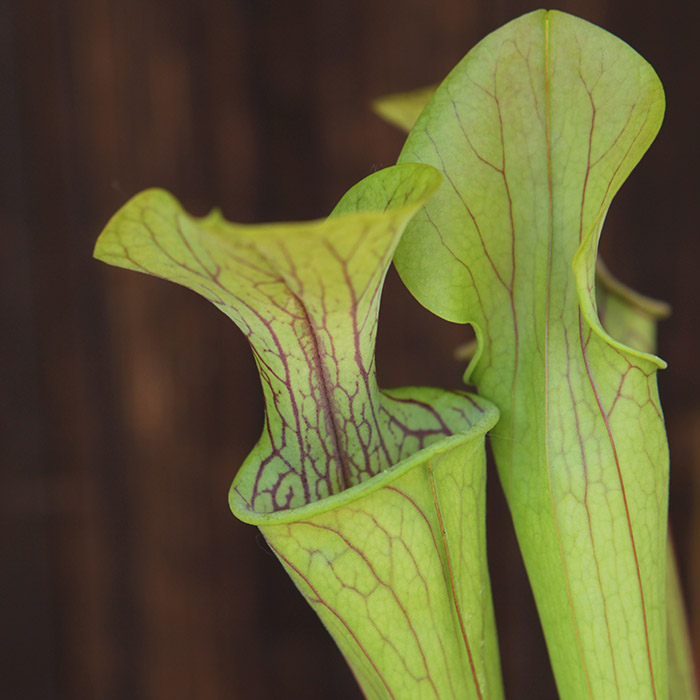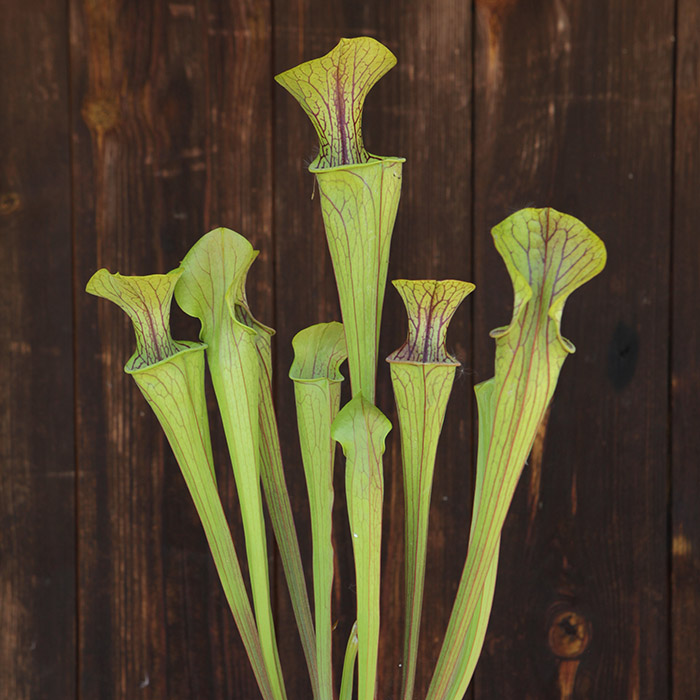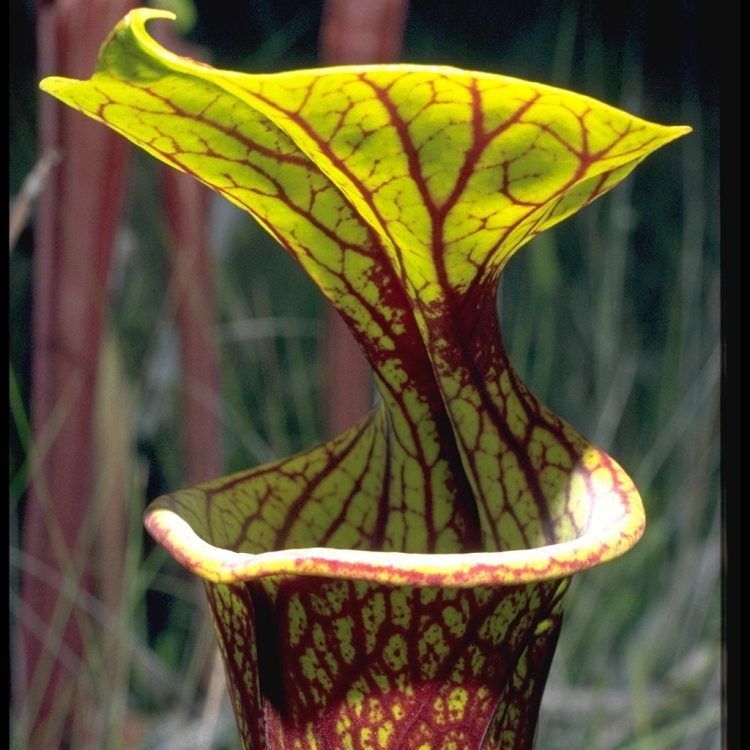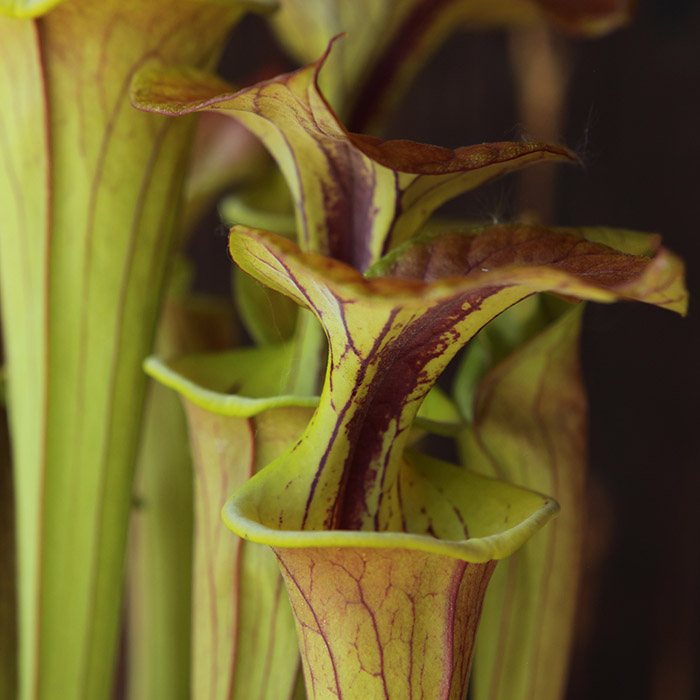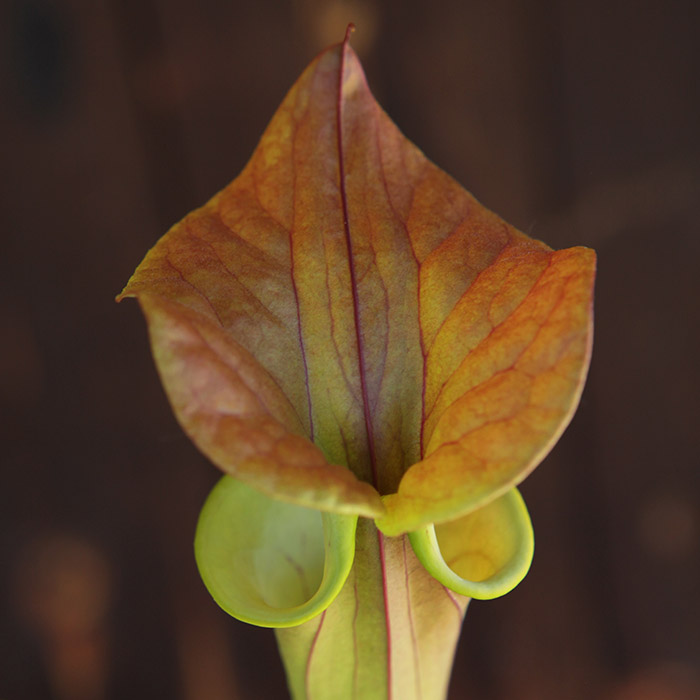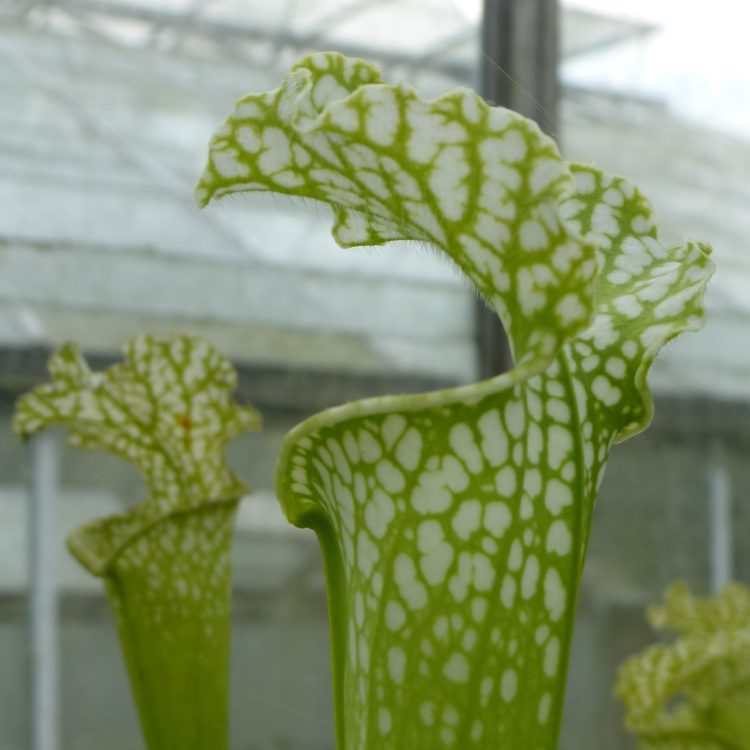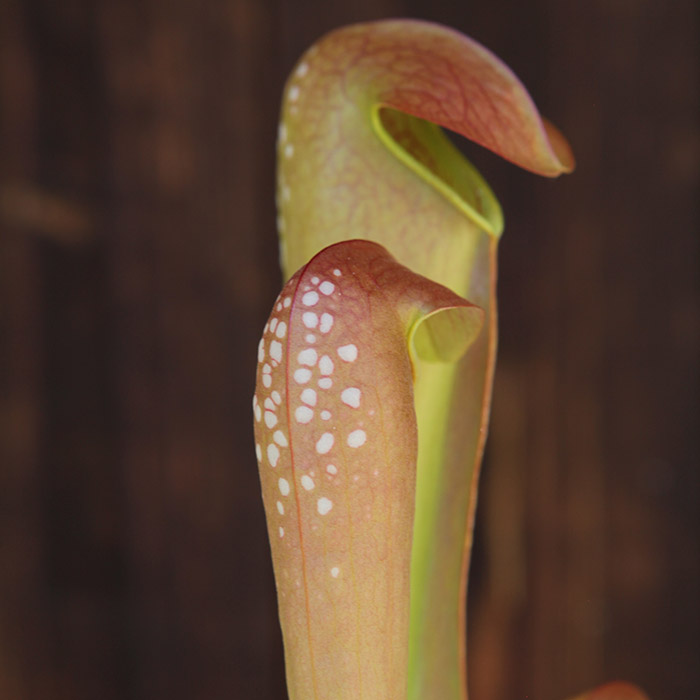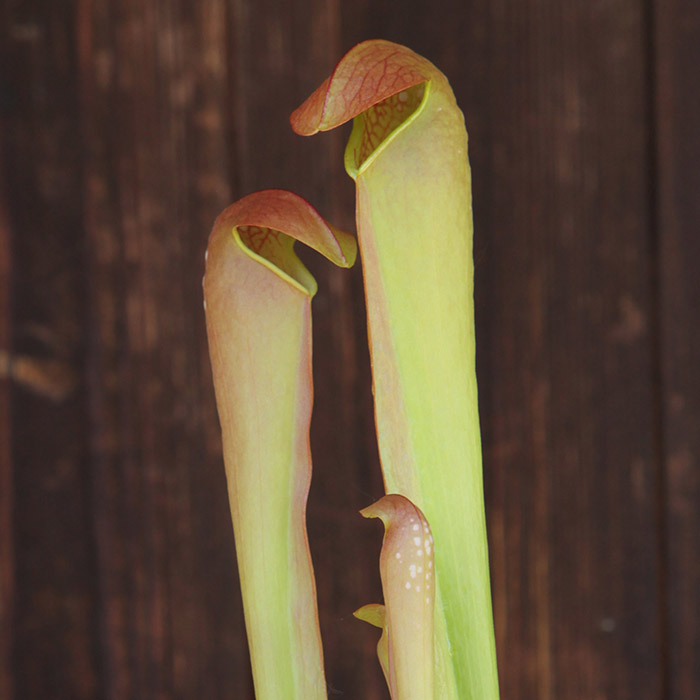Sarracenia Species
Sarracenias are found in North America, growing from Florida to British Columbia in sphagnum bogs and wet grassland. Sadly, due to development and drainage their habitat is being destroyed and they are now protected under CITES. Within each species there can be a lot of variation and growing the species is a good start to any collection.
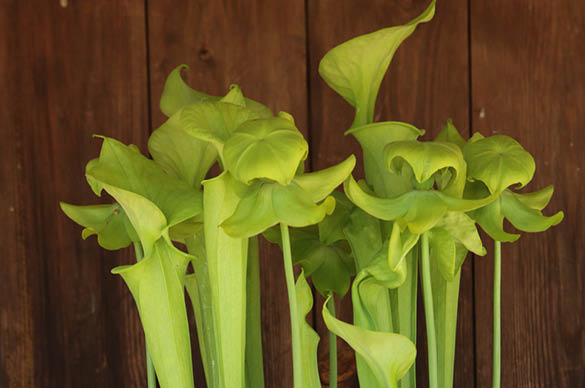
Showing 1–12 of 21 results
Showing 1–12 of 21 results
Sarracenia Species
In the United States and Canada, in moist places, among shrubs and coniferous forests, Sarracenias or Pitcher Plants grow. A carnivorous plant genus with eight different species and a large number of natural and artificial exotic plant hybrids. Many Sarracenia species are great for keeping on a windowsill at home (while they need the cold in winter to go dormant) or can even be kept outside all year round. For additional information on the care of this specific carnivorous plant please click here.
These carnivorous plants lure their prey with their exotic shapes and colours. The non-moving lid of the Trumpet Pitcher is studded with nectar glands and has an insect attracting colour and scent. All species of Sarracenia are perennial plants whose funnel-shaped leaves sprout from a creeping rhizome. The slender cups of these exotic plants such as Sarracenia flava and Sarracenia leucophylla can grow up to a metre tall.
Sarracenia purpurea and Sarracenia psittacina have stocky cups that lie flat on the ground. At the end of the growth period, thick, widened petioles are formed, which no longer grow into traps. All species, with the exception of Sarracenia purpurea, have a lid above the trapping cup that acts like a roof to protect the inside of the cup from filling up with rainwater. The non-moving lid is occupied by nectar glands and has an insect-attracting colour and scent. Once the prey has arrived at the cup’s entrance, it is lured further inside by a ‘nectar trail’. Inside, it is slippery, caused by a waxy coating, causing the prey to fall down. At the bottom of the trap, the insects are eventually digested in enzymes produced by the plant.
Sarracenia psittacina, Sarracenia minor and Sarracenia leucophylla, confuse their prey with light trap windows, causing the insect to choose the wrong exit. Just how functional Sarracenia’s trapping mechanism is can be seen in plants grown outdoors: the cups are usually filled to the brim with insects.
The flowers of these plants are distinguished by a distinctive shape resembling an inverted umbrella from which the sepals emerge. Pollen remain on their insides and are carried to the next flower by the nectar-seeking insects. The colours of Sarracenia’s flowers range from red-orange-yellow to all sorts of purplish-red hues.
We grow various Sarracenia (Trumpet Pitcher) species and the ones we offer are Sarracenia flava, leucophylla, minor, oreophila, psittacina, purpurea and rubra.

